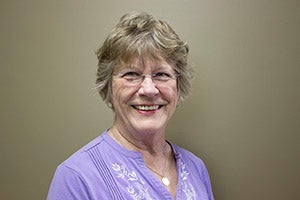Who was Coco Chanel?
Published 9:00 am Sunday, October 18, 2015
Art Is… by Bev Jackson Cotter
When I heard the name, my thoughts were hazy — Chanel No. 5, little black dress, well known — that’s about it.
I decided to find out more, and Wikipedia provided me with more info than I expected. I hope you enjoy this trip through the life of an amazing woman.
Gabrielle Bonheur Chanel was born Aug. 19, 1883, to an unmarried laundry woman in Saumur, France. Her father was an itinerant street vendor who peddled work clothes and undergarments. They married in 1884 and had five children. When Gabrielle was 11, her mother died, the two boys were sent to work as farm laborers and the girls were placed in a convent that was founded to care for abandoned and orphaned girls. It was there that she learned the art of sewing.
When she was 18, by now a lovely young lady, she was sent to a boarding school, found work as a seamstress and in the evenings began singing at a cabaret frequented by cavalry officers. Her new name “Coco” could have derived from two popular songs at that time. Her hopes for a career as a performer were not to be; but when she was 23 she met the young French ex-cavalry officer and heir to a textile firm, the wealthy Etienne Balsan. Their life together was one of wealth and leisure and gifts to her of diamonds, dresses and pearls. During this time, she began designing hats, became a licensed milliner and opened a boutique in Paris.
About this time she met Capt. Arthur Edward Capel who financed a new boutique, this time in Deauville where she began designing deluxe casual clothes suitable for leisure and sport. The fabrics she used were softer and more comfortable than materials in women’s clothing and her designs were also more appropriate to the upcoming, more independent-thinking ladies of the 20th century. It was during this period that the Chanel No. 5 fragrance was also created, thanks to the influence and support of Capel.
In 1915 she opened a shop in Biarritz catering to wealthy Spanish clients exiled from their homelands during World War I. In 1918 she opened a shop in one of the most fashionable districts in Paris, in 1924 created the corporation Parfums Chanel and by 1927 she owned five properties: fashion boutiques featuring clothing, hats, accessories, jewelry and fragrances.
It was during this incredible rise to stardom in the fashion and fragrance industries that she was introduced to the highest levels of British aristocracy, including such personages as the Duke of Westminster, Winston Churchill and Edward the Prince of Wales.
In 1931, Coco Chanel met Samuel Goldwyn and was offered $1 million (equal to $75 million today) to come to Hollywood to design clothing for MGM stars. Although her designs were worn by Gloria Swanson and Ina Claire in the movies and Greta Garbo and Marlene Dietrich were private clients, her experiences there were not satisfying. She was told that her dresses were not sensational enough. She “made a lady look like a lady.” Her reaction, “Hollywood is the capital of bad taste. … and it is vulgar.”
Her life story is one of contradictions — orphaned at an early age, attempt at a career on the stage, affairs with some of the most influential men of her time but never a marriage, designer and boutique owner with more than 4,000 employees, unsuccessful costume designer for theater, questionable relationships with Nazi officers during World War II and possible collaboration as a member of the German intelligence service.
Yet, in 1954 when she was more than 70 years old, she was able to open a new couture house where she again was recognized for the elegant and comfortable clothing styles for which she had become famous.
She died in 1971 at the age of 87. Her desk contained the designs for her new spring catalog.
Coco Chanel was sure that women would eventually rebel against the illogical “clinched in waists, padded bras and heavy skirts” designed in the 1890s and again in the 1950s by male clothing designers.
She was right!
Bev Jackson Cotter is a member of the Albert Lea Art Center, 226 W. Clark St. in Albert Lea.



